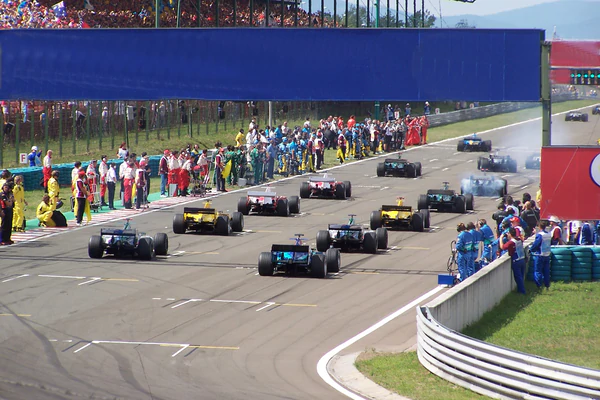Formula 1: A unique type of sponsorship

Sport transcends cultures and borders, it is a global language. It creates an emotional connection with audiences around the world, making it an ideal vehicle for the development of global brands. Formula 1 is a distinctive market when it comes to sponsorship, with the global reach of its 22 races and the colossal budgets that are at stake.
Multiple levels of sponsorship
Formula 1 is composed of different entities that can be sponsored (properties) and on different hierarchical levels. For example drivers, teams, circuits and the Championship itself.
Each level of sponsorship in Formula 1 has distinct characteristics that meet specific communication objectives.
Sponsorship of the driver will be influenced by the competition hazards. A driver with more on-track successes will be more popular and therefore, more visible. The nationality of the driver can also position him advantageously in his homeland. We need only think of the Santander bank following the driver Fernando Alonso from McLaren to Ferrari, to increase visibility in Spain.
The main advantage of sponsoring a team is the visibility on the car itself. Television cameras are pointed at the cars and races benefit from a worldwide broadcast. However, the large number of sponsors on the car can make brand recognition difficult. This type of sponsorship will allow a brand to publicize the relationship using the trademark of the team in various communications.
Circuits are an excellent opportunity to display a brand, both for live spectators and television viewers. Sponsorship of a circuit allows for a general association with the sport. These brands aim to increase their notoriety, hoping that the reputation of the sport will rub off on them. F1 races are annual events. To increase the effectiveness of the sponsorship, repetition is key and that means being present in several races.
Finally, sponsoring the Championship gives the partner exclusivity of its category. For example, LG is the technological partner of the Formula 1 Championship. These sponsorships often provide access to content as well as other media properties.
Each of these levels will also offer a wide range of possibilities, depending on the sponsors’ needs. A sponsor may also choose to be present at different levels. However, the agreements must be negotiated separately for each property. An exclusive agreement for the sport is, therefore, virtually impossible.
The brands arena
In addition to these multiple levels, Formula 1 displays a multitude of different sponsors: brands of all kinds come together and interact within the sport. This represents a significant challenge for any manager interested in sponsorship.
The most obvious attraction of the partnership is the relationship between the sponsoring brand and the property. All in the hope that the positive characteristics of the sponsored rub off on the sponsoring brand. However, this phenomenon called image transfer is not unidirectional.
Other sponsors are also to be considered. For example, imagine how your brand image would be impacted with the presence of tobacco or alcohol brand names.
The presence of competitors in the same sport may limit the competitive advantage resulting from the partnership. There are several examples of this phenomenon in Formula 1, think car manufacturers, banks, telecommunications companies or alcohol brands.
The risks
The situation may get tougher. There are many risks to consider before committing to sponsorship.
Tiger Woods is a prime example of the risks associated with sponsoring a celebrity.
Teams have not escaped the bad press either. Recently, scandals have affected two F1 teams: at McLaren, an employee was found in possession of technical documents belonging to Ferrari, and at Renault, a driver deliberately caused an accident to favour the second car on the track.
In terms of brands, the Renault team wears a Lada logo. Although the French automaker is a shareholder of the company that owns the Lada brand, this situation leads to serious questions about the impact this situation could have on the Renault brand.
F1 raises several questions that managers will have to carefully consider before committing to any sponsorship agreement. Sponsorship in a multi-brands and multi-levels environment is currently the subject of a research at HEC Montreal.
This article is a special collaboration of Johanne Brunet, Françis Dumais and François A. Carrillat.
